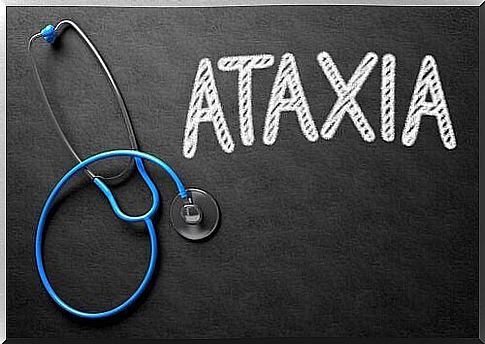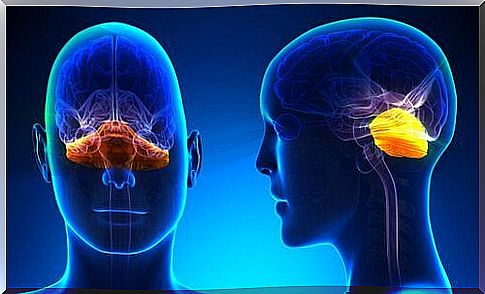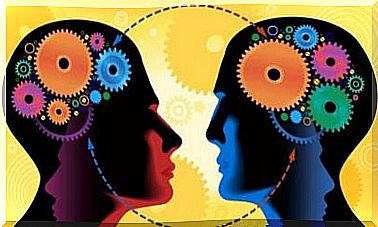Ataxia: Symptoms, Causes And Treatment

Having ataxia is difficult and exhausting. This clinical sign involves the normal development and daily chores.
Many things can affect our health and thus our quality of life. Our movements can also be affected. In fact, there is a characteristic clinical disease called ataxia, which is characterized by a lack of control over muscle movements, coordination and posture.
This disease consists of a lack of control over muscle movements needed to be able to move. It can occur for various reasons. In this article, we will discuss its causes, diagnosis and treatment.
What is ataxia?
The word comes from Greek and means “without control.” It is a change in coordination in all types of movements in the absence of paralysis. Ataxia can affect the gait, torso, limbs or a combination of these. Furthermore, it can be detected using the following symptoms:
- Nystagmus: Involuntary, uncontrolled eye movements.
- Dysarthria: Difficulty pronouncing sounds and words.
- Hypotension: Decreased tension or muscle tension.
- Dysmetry: A condition that prevents the individual from performing motor movements that adjust the distance to be used.
- Dysdiadochokinesia: Impaired ability to make alternating movements quickly.
- Dysphagia: Difficulty swallowing.
- Difficulty walking or complete lack of ability to walk.
- Lack of coordination and precision.
- Cognitive changes (in terms of thinking).
- Emotional changes: It creates emotional instability because it is a very tiring condition.
Ataxia can manifest itself through other diseases, such as multiple sclerosis. But it can also come by itself, although it rarely happens. Both children and adults can get it.
In fact, Salman and others (2013) conducted a study in which they analyzed the epidemiology of chronic ataxia in children. This study was published in the journal Developmental Medicine and Child Neurology.

What caused it?
Acquired ataxia: Manifested due to another disease the patient is suffering from.
- Married. This may be due to the harmful effects of carbon monoxide or alcohol.
- Autoimmune: It may be ataxia due to gluten or one related to paraneoplastic subactive cerebellar degeneration.
- Nutritional deficiencies: It may be vitamin E deficiency, Wernicke-Korsakoff syndrome and subactive combined degeneration.
- Neurodegenerative diseases: It can be sclerosis or spinocerebellar ataxia.
- Tumors: Tumors such as medulloblastoma, astrocytoma and hemangioblastomy can cause ataxia.
Genetic ataxia: It is inherited and may be autosomal recessive or dominant.
- Recessive: Friedrich’s ataxia is the most common. It is caused by nerve degeneration in the ganglione nerve endings, the spinal cord and corticospinal ends and the toothed nucleus.
- Dominant: Depending on the cause of this disease, it may be episodic or progressive. Within dominant ataxias, we find spinocerebellar ataxias, congenitial cerebellar ataxia, and cerebellar vermis aplasia among others.
As you can see, there are different types of ataxia. Until now, it has not been possible to find a cure for it. But there are treatments that can help patients who suffer from it.
To diagnose ataxia
There are various tests that can diagnose ataxia:
- Finger-nose: The patient is asked to touch his nose with the tip of his index finger. They are then asked to touch the doctor’s index finger.
- Heel-knee: The patient should be in a supine position on his back. You ask them to place their heel on the knee of the other leg and then let it slide down over the shin. The patient performs this with the eyes open and then closed and with both legs.
- Rapid change exercise: The doctor asks the patient to rotate both hands at the same time.
- EMG: It is a study of the condition of the nerves.
- Psychodiagnosis: Neuropsychological examinations to evaluate the patient’s locomotor functions.

Treatments for ataxia
The treatments for this disease are limited and not targeted to the disease. The treatments are rather aimed at rehabilitation.
Furthermore, psychological interference is important. First, it helps the patient understand what is happening to them. Second, they also teach them to control their emotions and thoughts about their condition. Last but not least, the patient’s relatives must also participate in the psychologists’ work so that they can learn to care for them afterwards.








